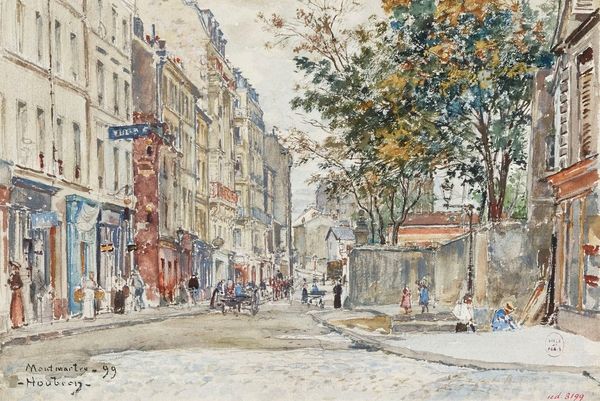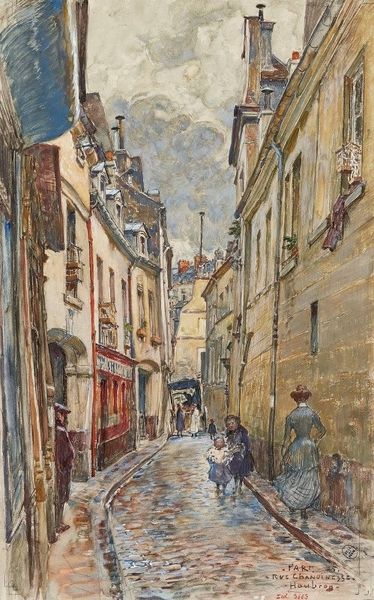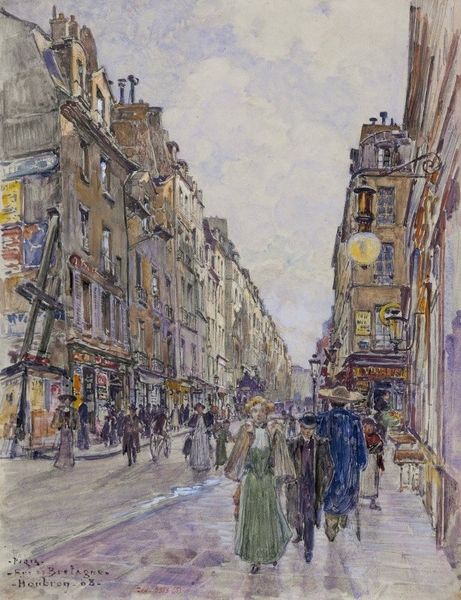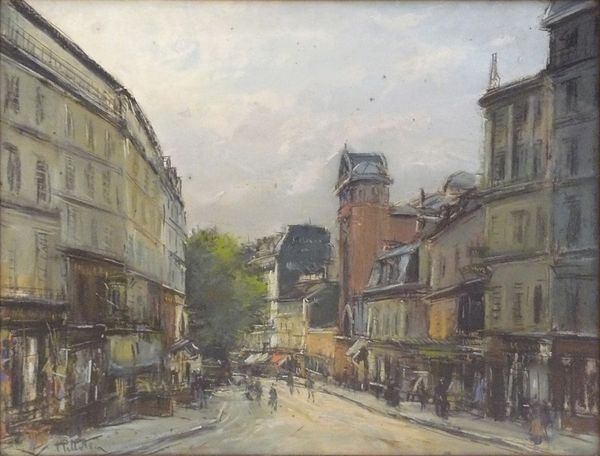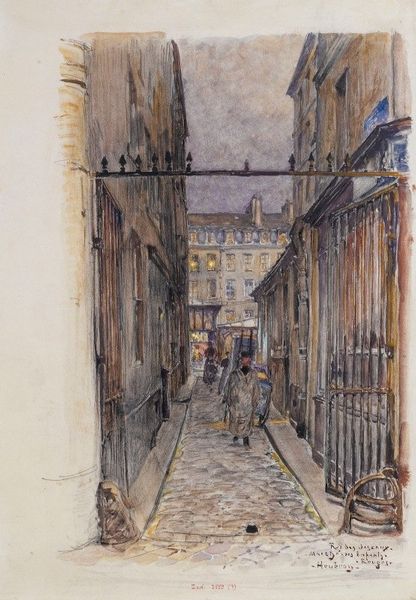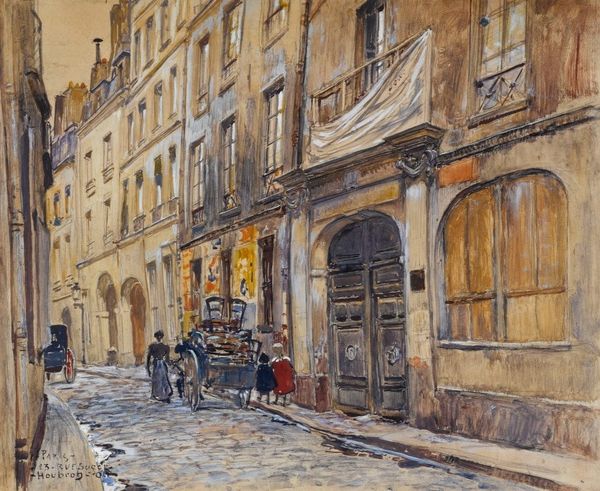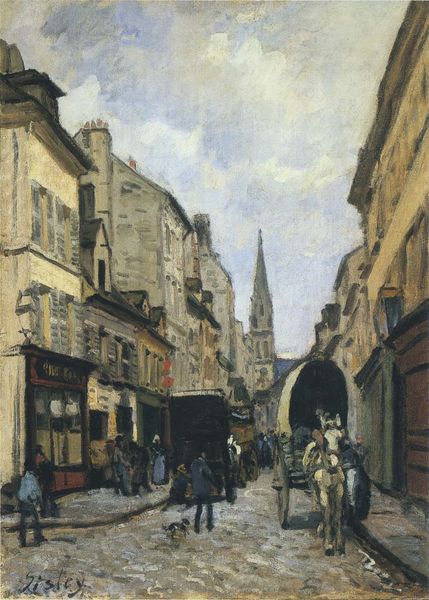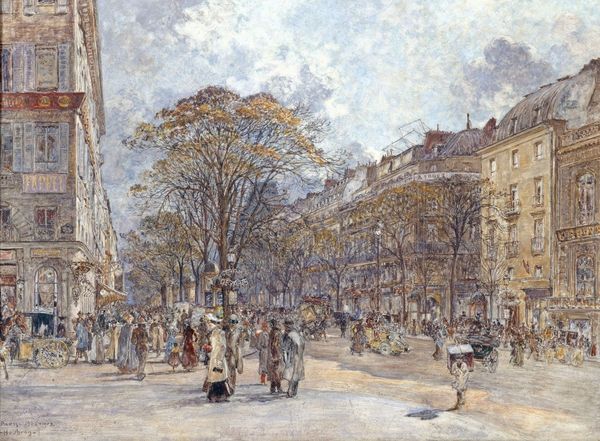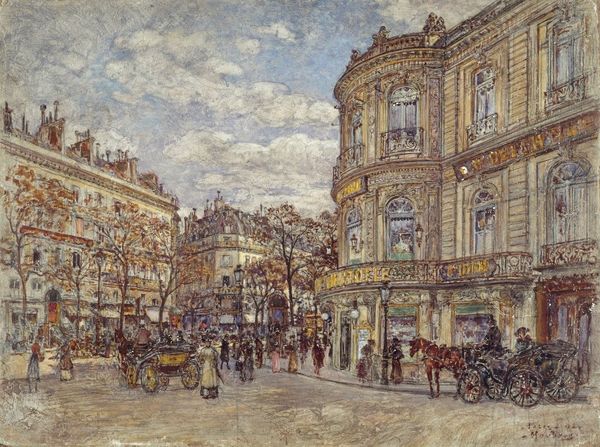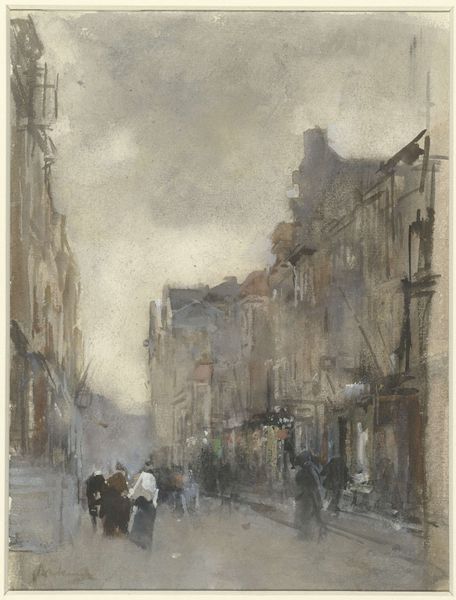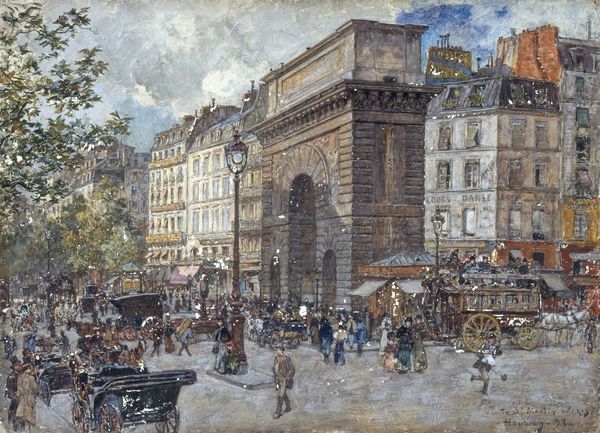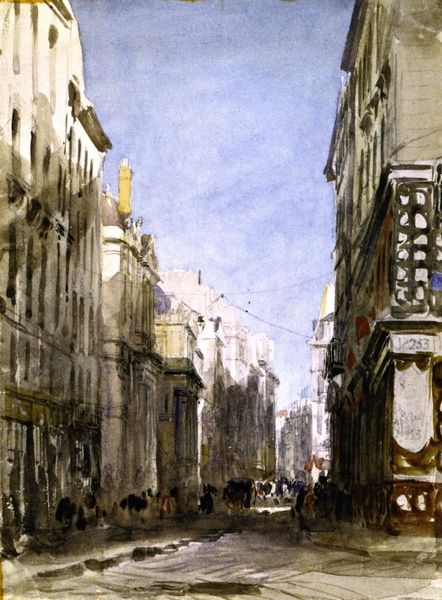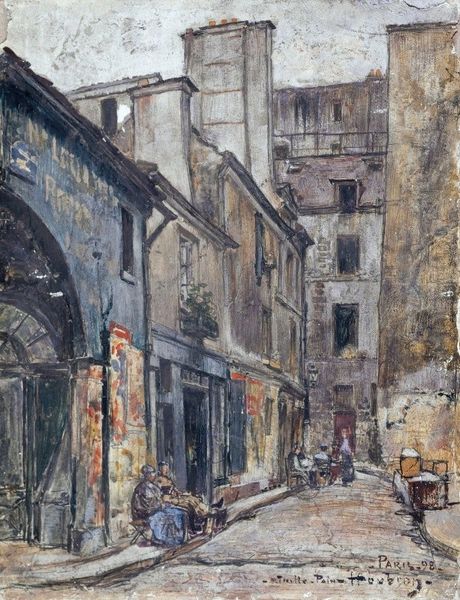
Copyright: Public Domain: Artvee
Curator: Frederic Houbron’s watercolor from 1899, “La rue du Chevalier-de-la-Barre, avec le Sacré-Cœur en construction,” offers us a view up a Parisian street toward the then unfinished Sacré-Cœur basilica. Editor: There’s something dreamlike about the scene; the washes of color create this incredible ethereal feel, especially with that scaffolding almost ghostlike against the sky. Curator: The image resonates deeply, I think, precisely because the Sacré-Cœur has always been such a politically charged site. Conceived as a national penance after the Franco-Prussian War, its construction became synonymous with conservative forces seeking to reassert control amidst growing social unrest. Editor: I’m struck by the use of scaffolding. We usually think of scaffolding as representing change and creation. However, given the Basilica's history, it seems that the symbol would take on additional meanings. It reminds me of illustrations found in medieval books of hours showing cities under construction, emblems of worldly ambition. Curator: Exactly. We’re seeing Paris at a moment of profound transformation, grappling with its identity. Houbron, though often categorized with Orientalist painters, lived near the subject. I think he portrays the neighborhood with a sensitive eye towards these urban conflicts. Editor: Yes, the Basilica under construction dominates everything, a looming promise, or perhaps a threat, casting a shadow on daily life. There’s a pedestrian walking towards us in the lower half, I feel they are struggling to keep their balance. Curator: Notice how the Sacré-Cœur, even unfinished, becomes a spectacle. We observe it framing everyday Parisian life, with figures walking by. What implications did the construction have on race and class dynamics of the region, or the urban population nearby? I wish the work gave us insight into those struggles, those implications. Editor: And still, it is hard to dismiss that symbol. You find churches dominating the skylines of the old world, but, here the Sacré-Cœur carries unique meaning, fraught as it is with history, aspiration, and unresolved tension. Curator: Perhaps. What the work offers us instead is a compelling snapshot of the basilica as a visual and political entity in 1899. Editor: Ultimately, I find myself wondering about what other symbolic representations of building and place-making would offer.
Comments
No comments
Be the first to comment and join the conversation on the ultimate creative platform.
